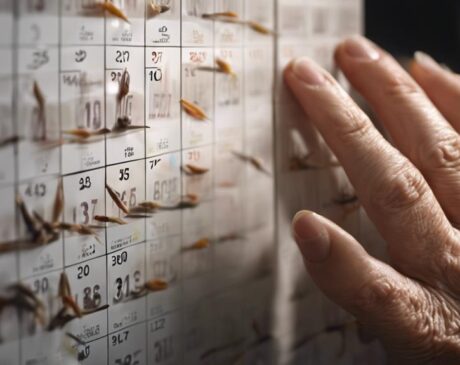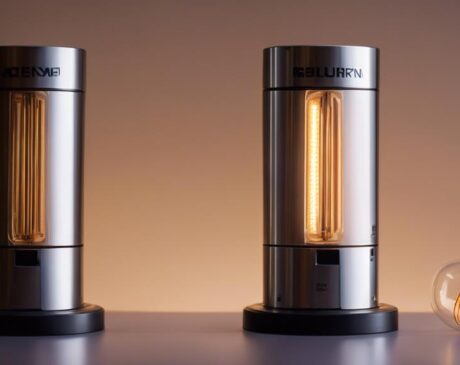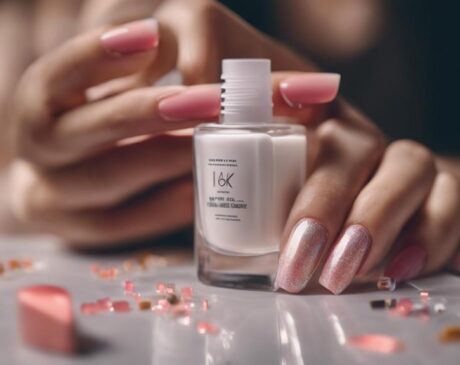Is a UV Nail Lamp the Same as a Black Light?
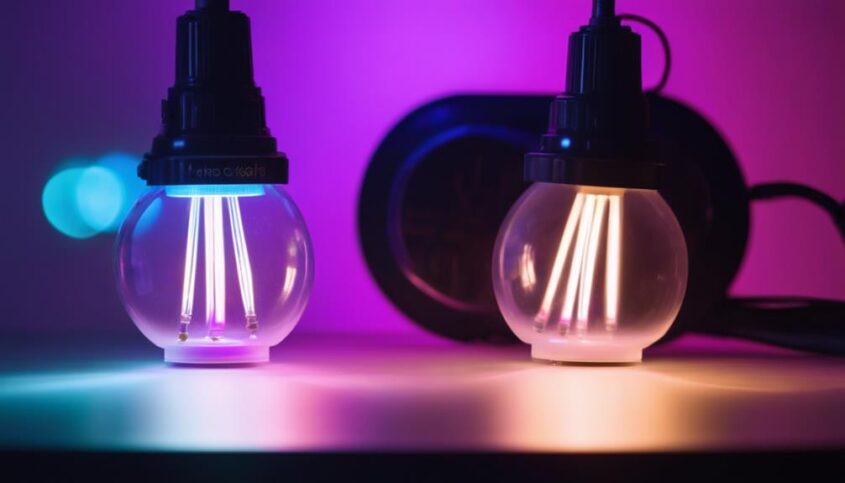
A UV nail lamp and a black light are not the same; they have different purposes. UV nail lamps are designed for curing gel polish efficiently, emitting a specific UV light wavelength. In contrast, black lights have a broader UV spectrum for special effects and detection. UV nail lamps prioritize nail safety and optimal curing time, while black lights are versatile for entertainment purposes. Understanding these differences can help you choose the right light for your needs. It's essential to consider their unique functions before deciding which one suits your requirements best.
Key Takeaways
- UV nail lamps and black lights differ in their design and intended use.
- UV nail lamps cure gel polish with specific UV wavelengths for nail treatments.
- Black lights emit broader UV spectra for entertainment and detection applications.
- UV nail lamps prioritize nail curing efficiency and safety.
- Understanding the unique purposes of UV nail lamps and black lights helps differentiate their functions.
UV Nail Lamps Vs. Black Lights
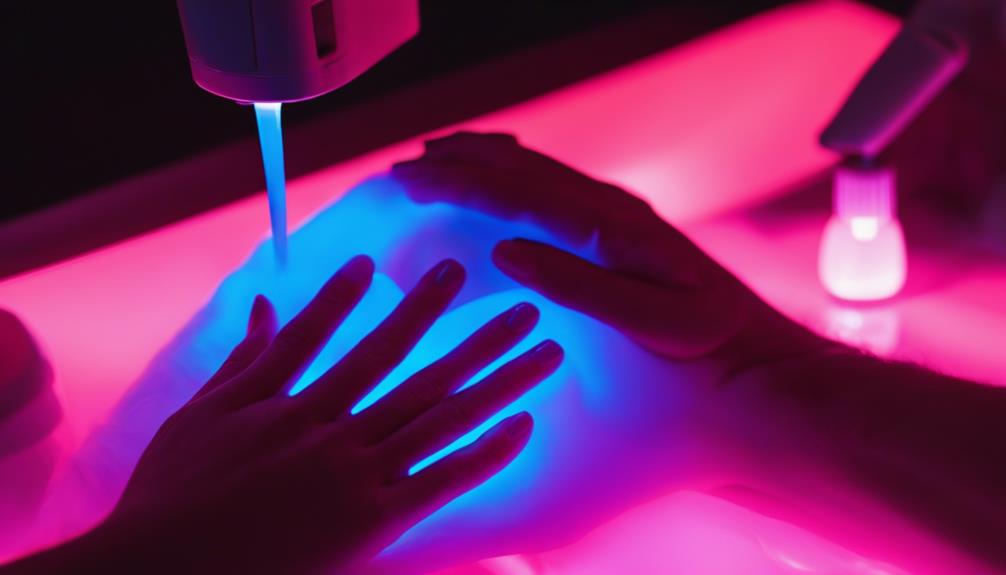
When comparing UV nail lamps to black lights, it is essential to understand the distinct purposes and functionalities of each device. UV nail lamps are specifically designed for curing and drying gel nail polish quickly and efficiently. These lamps emit a specific wavelength of ultraviolet (UV) light that activates photoinitiators in the gel polish, causing it to harden in a matter of minutes. On the other hand, black lights, also known as ultraviolet (UV) lights, emit a broader spectrum of UV light that is often used for special effects, counterfeit detection, and entertainment purposes.
UV nail lamps are engineered with precision to emit the ideal UV wavelength for curing gel nail polish without causing harm to the skin. They typically feature timers and sensors to ensure the optimal curing time and prevent overexposure. In contrast, black lights are more versatile in their applications, used for creating unique visual effects in clubs, theaters, and escape rooms.
How UV Nail Lamps Work
UV nail lamps utilize a specific wavelength of ultraviolet (UV) light to efficiently cure and dry gel nail polish. These lamps are essential tools in modern nail salons, providing a quick and effective way to set gel polish and create long-lasting manicures. Here's how UV nail lamps work:
- UV Light Emission: The lamp emits UV light in the 365-405 nanometer range, which is optimal for curing gel nail polish.
- Photo-initiators Activation: The UV light activates photo-initiators in the gel polish, triggering a polymerization reaction that hardens the polish.
- Efficient Curing Process: By exposing the nails to UV light for specific durations, the gel polish cures evenly and rapidly, ensuring a durable and glossy finish.
Innovations in UV nail lamp technology continue to enhance the curing process, reducing drying times and improving the quality of gel manicures. These advancements cater to the demand for efficient and long-lasting nail treatments in the beauty industry.
Understanding Black Light Technology
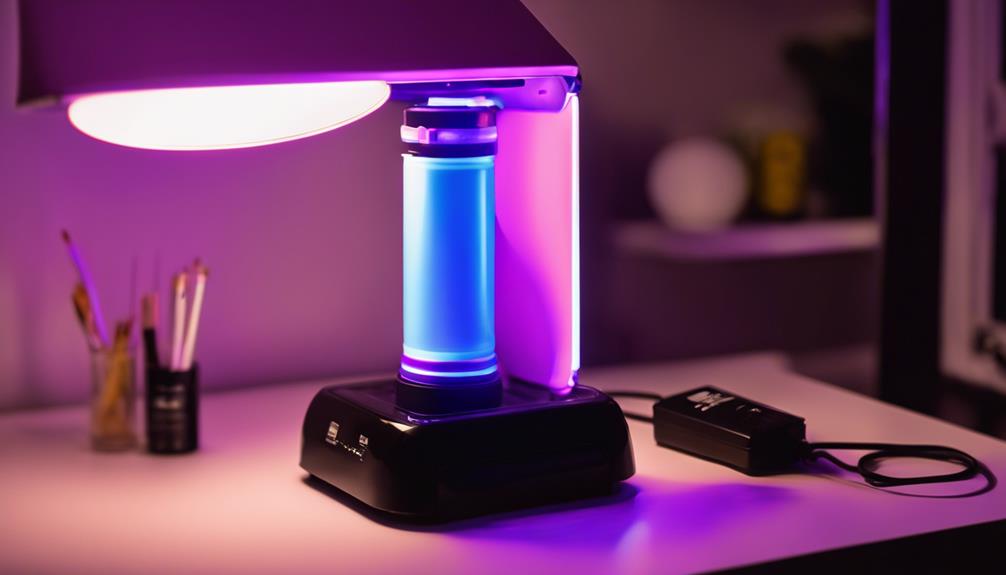
Utilizing specific wavelengths within the ultraviolet spectrum, black light technology is employed in various applications ranging from entertainment to forensics. Black lights emit ultraviolet (UV) light that is not visible to the human eye. These lights typically operate at a wavelength of around 365 nanometers, falling within the UV-A spectrum. When materials containing fluorescent substances are exposed to black light, they absorb the UV radiation and re-emit it at longer wavelengths, making them glow in the dark.
Black light technology is commonly used in entertainment venues such as clubs and concerts to create visually stunning effects. Additionally, black lights play a crucial role in forensic investigations where bodily fluids, fibers, or other substances can be detected under UV illumination. This technology aids in crime scene investigations by revealing evidence that is not easily visible under normal lighting conditions.
Innovations in black light technology continue to expand its applications, making it a versatile tool in various industries where detection and visibility of specific substances are essential.
Different Uses of UV Light
In various industries and fields, the utilization of UV light extends beyond entertainment venues and forensic investigations, showcasing its versatility in a multitude of applications. UV light is a powerful tool that offers a range of uses, making it an indispensable technology in various innovative processes. Some key applications include:
- Medical Industry: UV light is utilized for sterilization purposes in healthcare settings, effectively killing bacteria and viruses on surfaces and in the air.
- Manufacturing Sector: UV light is employed in adhesive curing processes, where it quickly hardens adhesives and coatings, increasing efficiency in manufacturing operations.
- Agricultural Practices: UV light is harnessed in agriculture for pest control, as it can disrupt the breeding cycles of insects and pathogens, reducing the need for chemical pesticides.
These examples highlight the diverse range of uses for UV light, demonstrating its significance in advancing technologies across different sectors.
Safety Concerns and Precautions
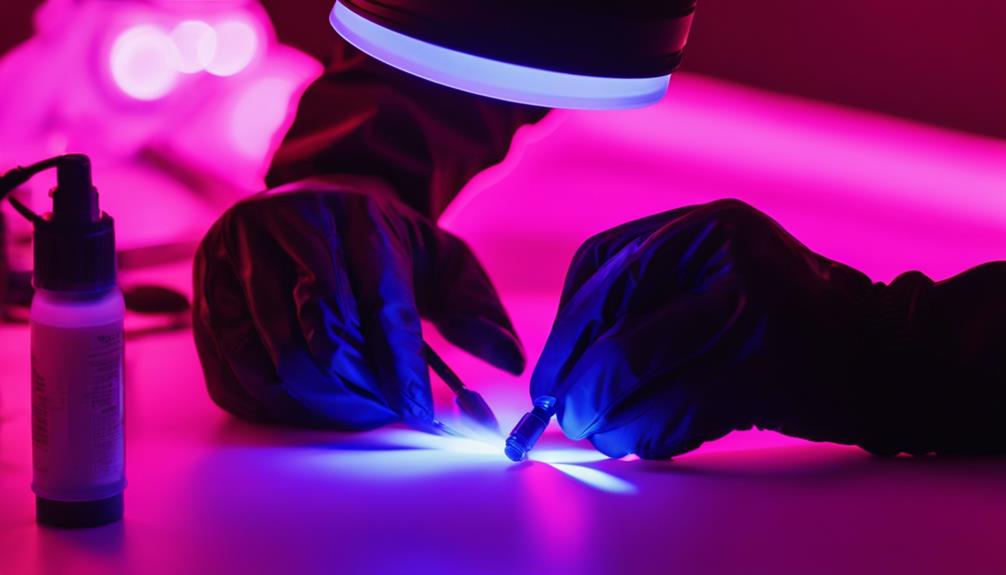
Safety in handling UV light sources is paramount to prevent potential health risks and ensure a secure working environment. UV nail lamps, commonly used in nail salons for curing gel nail polish, emit UVA rays that can cause skin damage if not used properly. To mitigate risks, it is crucial to follow safety precautions. Users should wear UV-blocking gloves to shield their hands from direct exposure. Additionally, using broad-spectrum sunscreen on exposed skin can provide added protection. Limiting exposure time is also important as prolonged exposure to UV radiation can increase the risk of skin cancer and premature aging. Regular maintenance of UV lamps is essential to ensure they emit the correct wavelength and intensity of light for their intended purpose. By adhering to these safety measures, individuals can enjoy the benefits of UV nail lamps while minimizing potential health hazards associated with UV light exposure.
Choosing the Right Light for You
When considering the right light for your needs, it's essential to compare the light intensity output of UV nail lamps and black lights. Additionally, evaluating the effectiveness of nail curing under each type of light is crucial in selecting the most suitable option. Lastly, prioritizing safety considerations, such as potential skin damage from prolonged exposure to UV light, is paramount in making an informed decision.
Light Intensity Comparison
Selecting the appropriate light intensity is crucial when choosing the right UV nail lamp for your needs. To ensure you make the best choice, consider the following:
- Wattage: Higher wattage lamps generally offer greater intensity, ensuring faster curing times.
- LED vs. UV Lamps: LED lamps are known for their high-intensity light output, offering quicker curing compared to traditional UV lamps.
- Adjustable Settings: Look for lamps with adjustable settings to customize the intensity based on the nail polish or gel being used.
Nail Curing Effectiveness
To maximize the effectiveness of nail curing, choosing a UV nail lamp that matches the specific requirements of your nail polish or gel is essential. Different nail polishes and gels have varying curing needs in terms of wavelength and intensity. LED nail lamps are suitable for curing LED-curable polishes, while UV nail lamps are better for UV-curable products. When selecting a UV lamp, consider the wattage, wavelength range, and curing times recommended by the nail polish or gel manufacturer. Investing in a high-quality UV nail lamp that meets the precise curing requirements of your products will ensure efficient and consistent curing results, leading to longer-lasting, salon-quality manicures and pedicures in the comfort of your own home.
Safety Considerations
For a safe and effective nail curing experience, understanding the differences between UV nail lamps and black lights is paramount. When considering safety, here are three important points to keep in mind:
- UV Exposure: UV nail lamps emit UVA rays which can potentially increase the risk of skin damage and aging. It is crucial to limit exposure and use protective measures like sunscreen.
- Eye Protection: Prolonged exposure to UV light can harm your eyes. Consider using UV-blocking glasses or goggles while using nail lamps to shield your eyes.
- Quality Assurance: Ensure the UV nail lamp you choose meets safety standards and is designed for nail curing purposes to minimize any risks associated with prolonged exposure.
Frequently Asked Questions
Can a UV Nail Lamp Be Used as a Black Light for Parties or Decorations?
A UV nail lamp emits ultraviolet light to cure gel polish, while a black light illuminates fluorescent substances. While a UV nail lamp may emit some UV light, it is not designed to function as a black light for parties or decorations due to differences in purpose and intensity.
Are There Any Health Risks Associated With Using a UV Nail Lamp for Extended Periods of Time?
Extended use of UV nail lamps can pose health risks like skin damage and potential eye issues due to UV radiation exposure. Following safety guidelines, using protective gear, and limiting exposure can help mitigate these risks.
Can a Black Light Be Used to Cure UV Gel Nail Polish Like a UV Nail Lamp?
While black lights emit ultraviolet (UV) radiation, they do not typically provide the specific wavelength and intensity required to effectively cure UV gel nail polish. UV nail lamps are designed for this purpose, ensuring efficient curing.
Are There Any Specific Guidelines for Choosing the Right UV Nail Lamp for Home Use?
When choosing a UV nail lamp for home use, consider wattage, curing time, and compatibility with your gel polishes. Opt for a lamp with a timer, ample space, and proper UV output to ensure efficient and safe manicures.
Are There Any Specific Safety Precautions That Need to Be Taken When Using a Black Light for Entertainment Purposes?
When using a black light for entertainment, it's essential to follow safety precautions. Ensure proper ventilation to avoid inhaling harmful fumes emitted by the lamp. Limit direct exposure to skin and eyes, as prolonged contact can cause damage.

